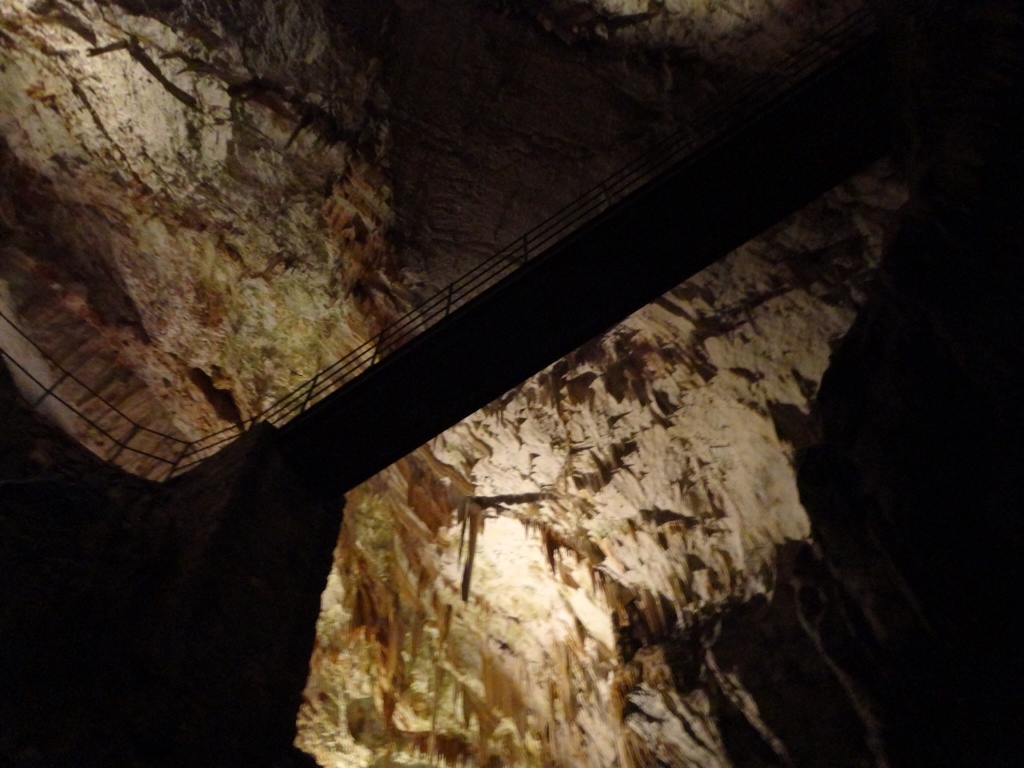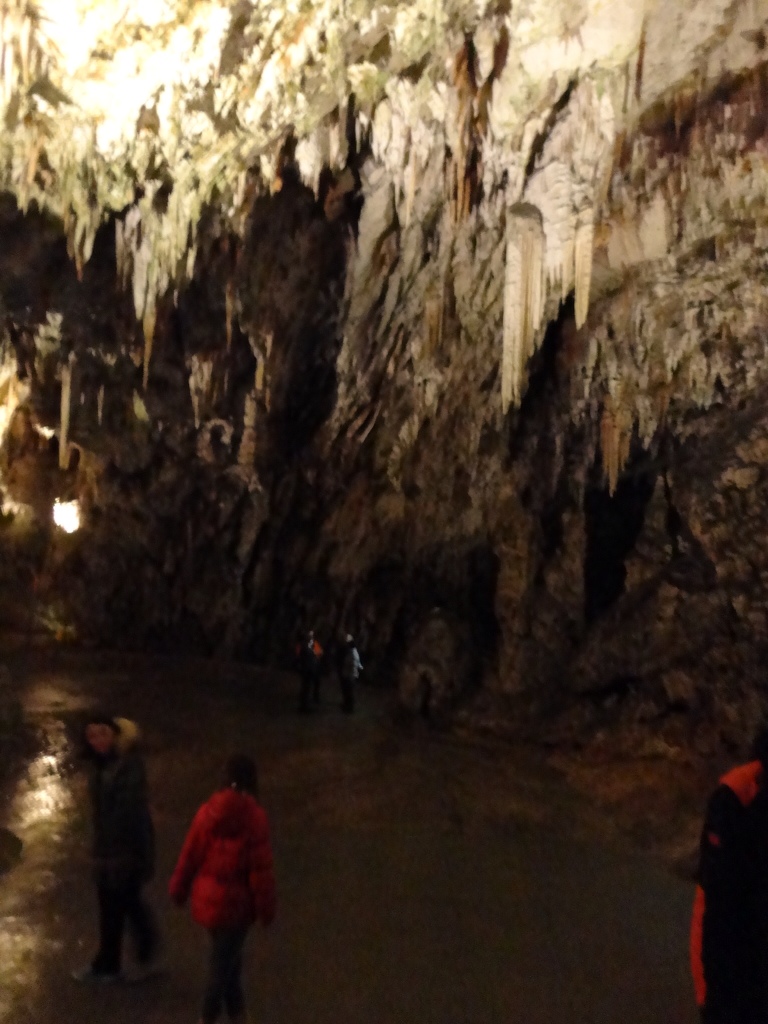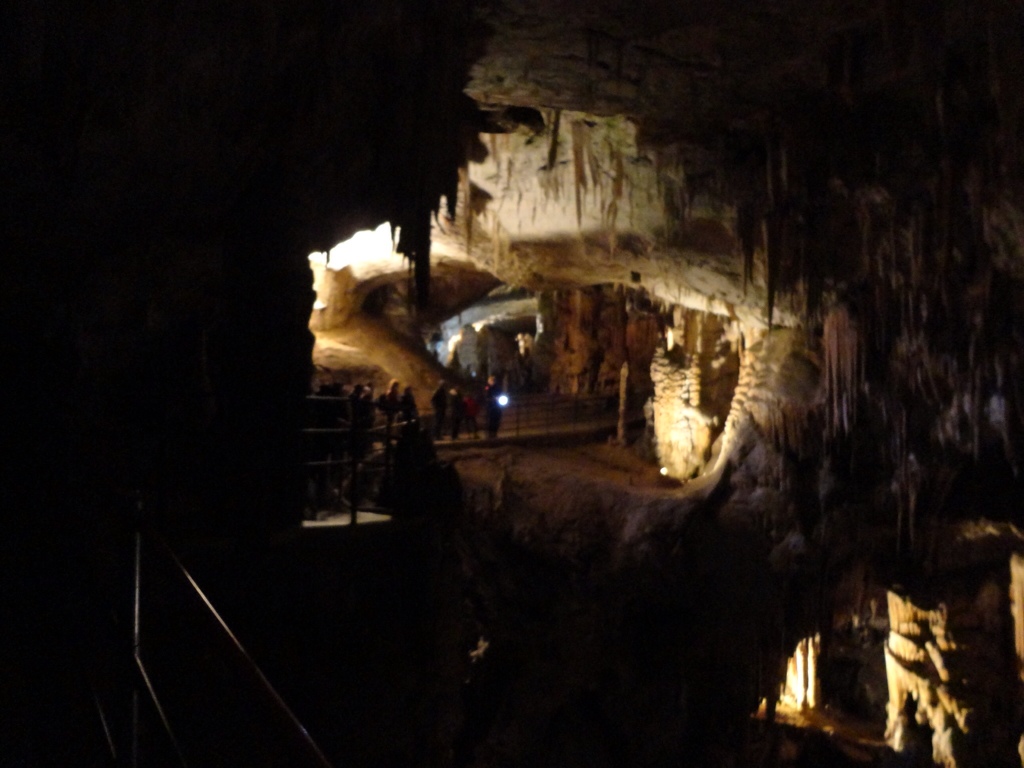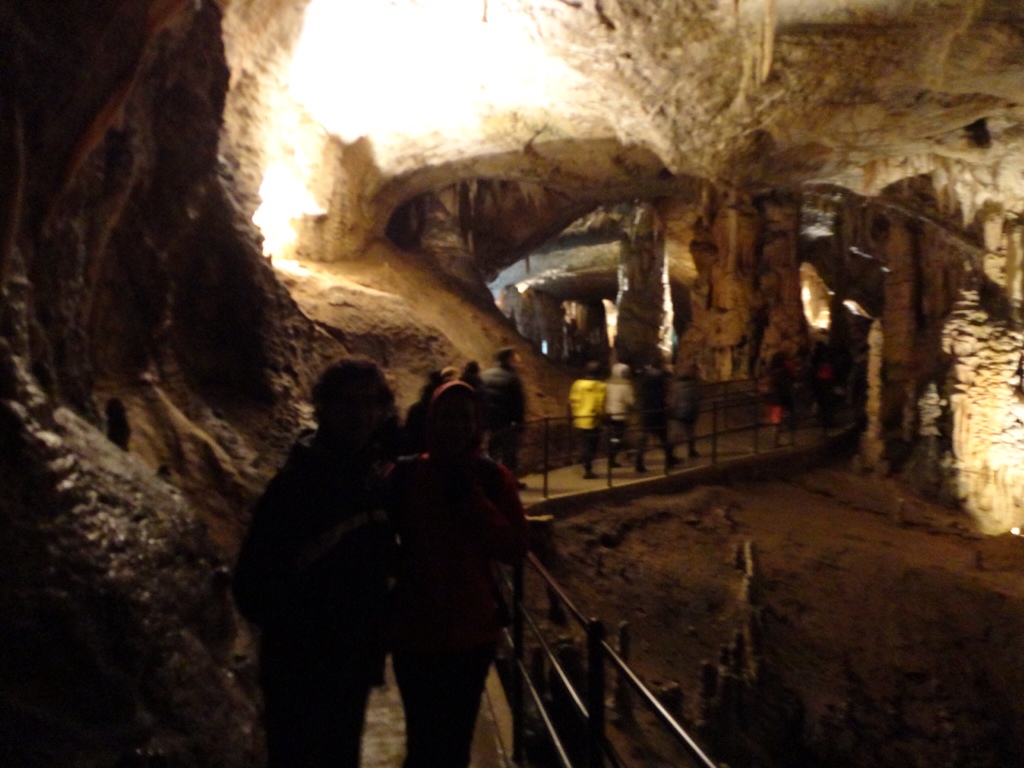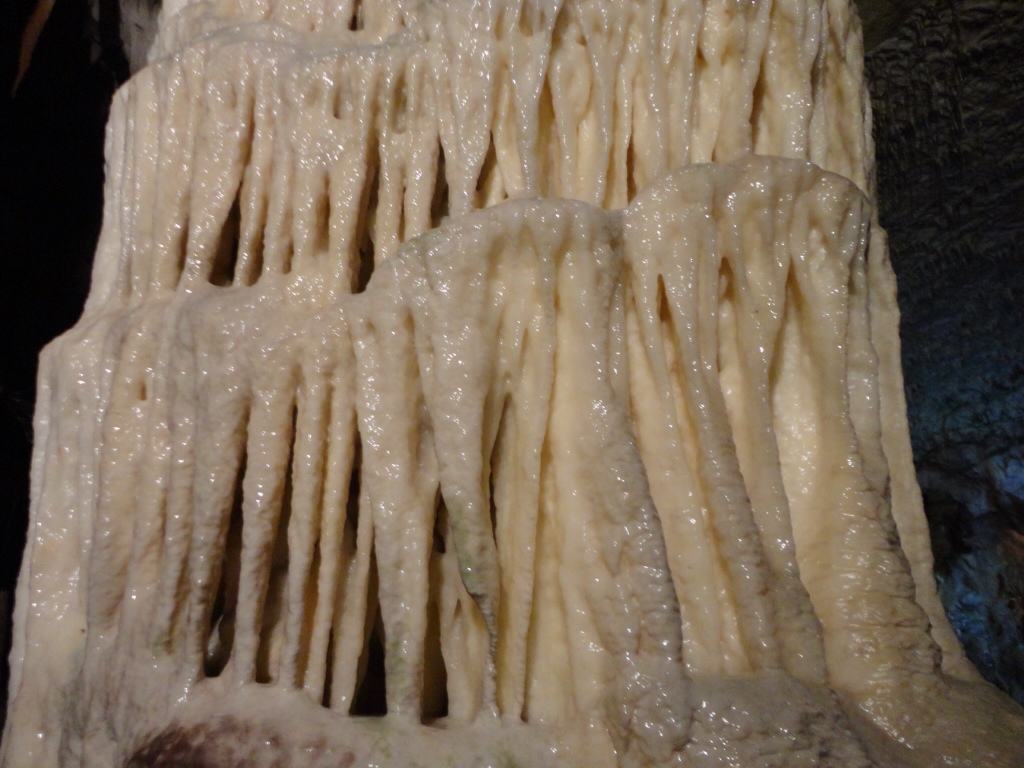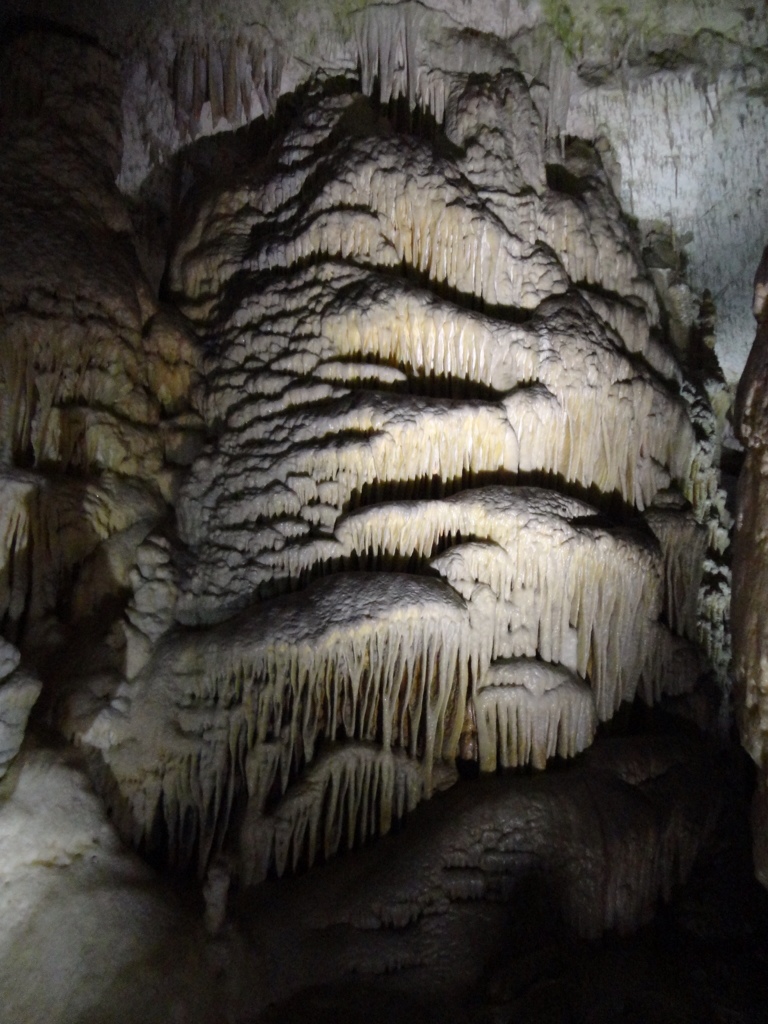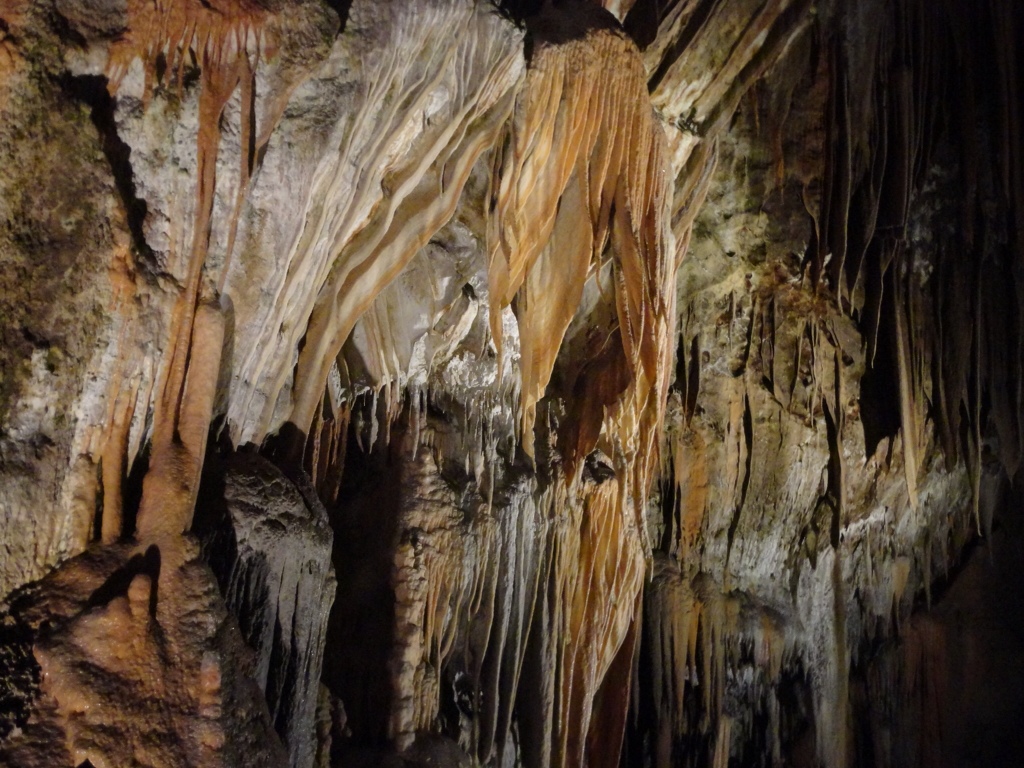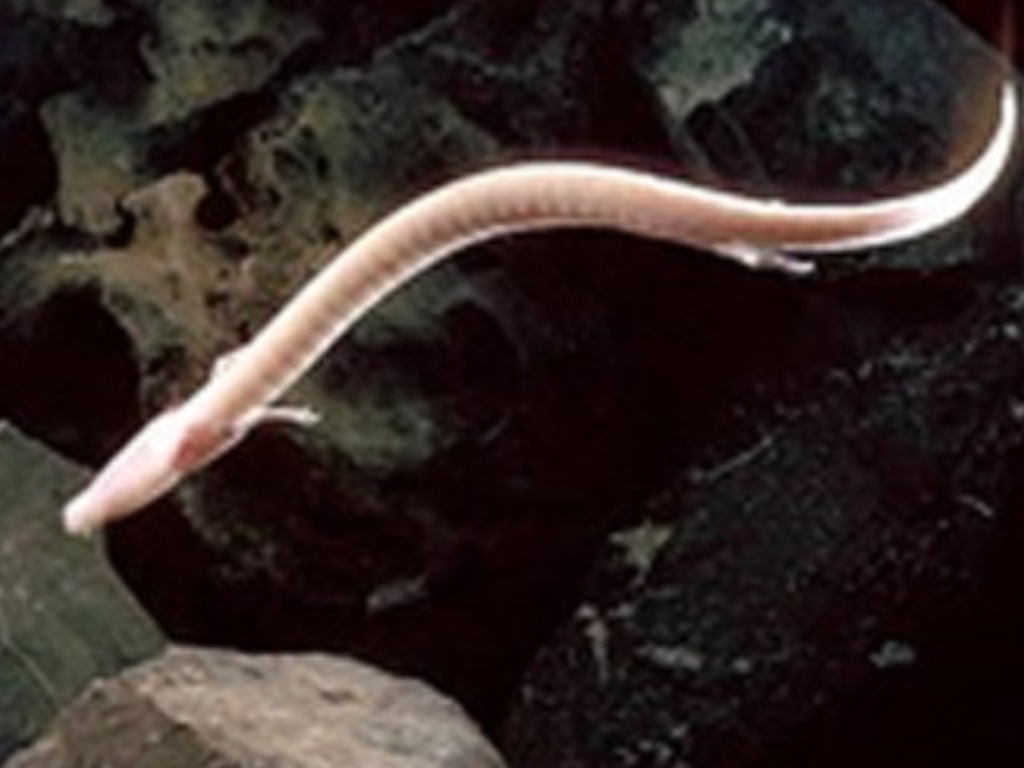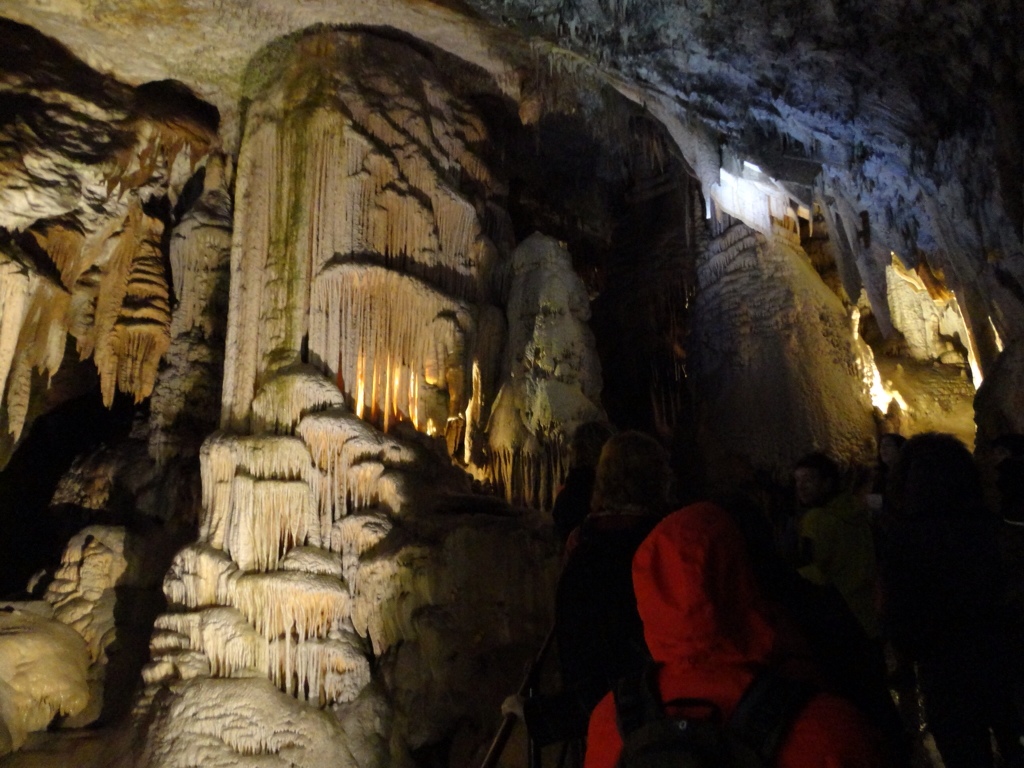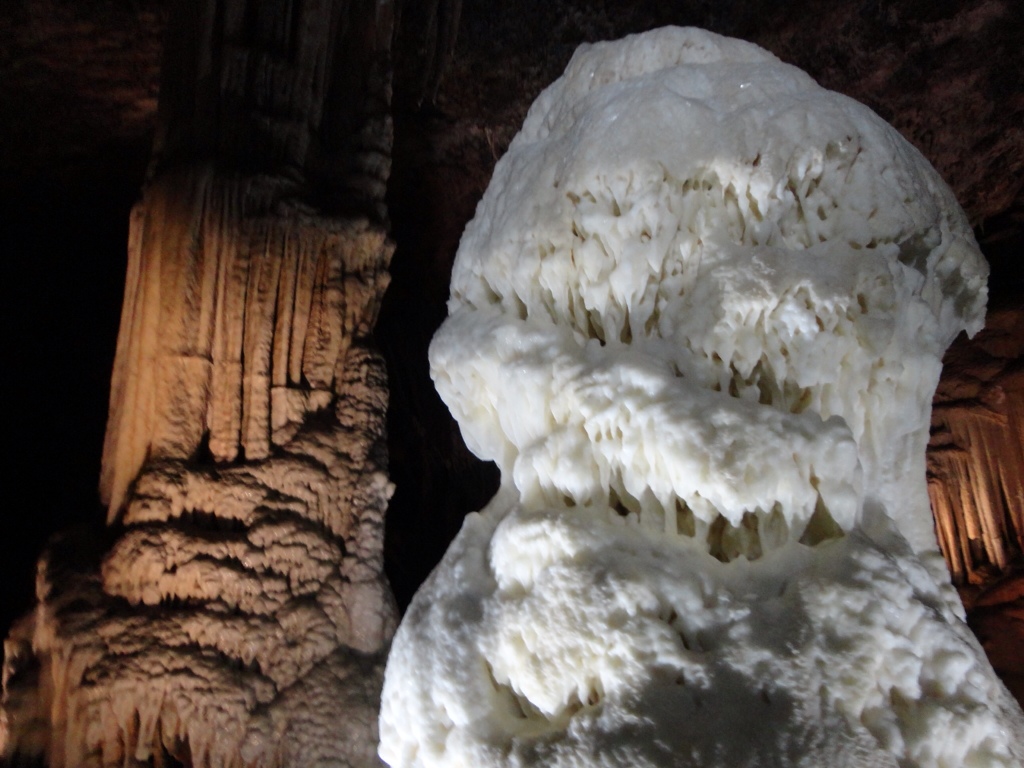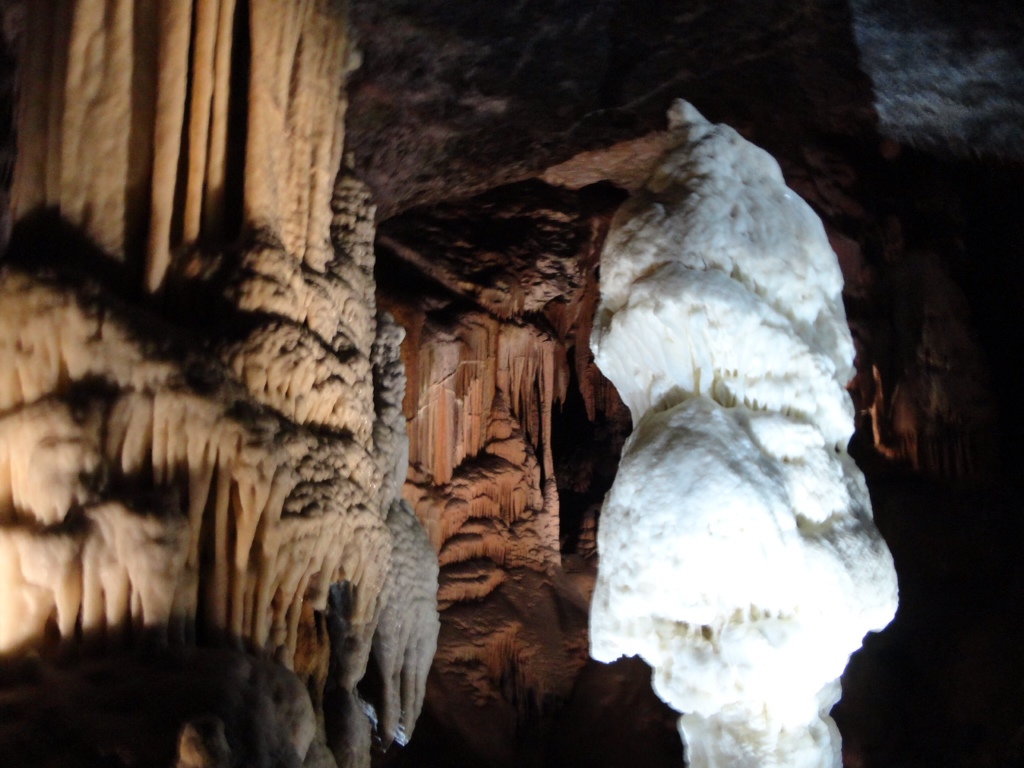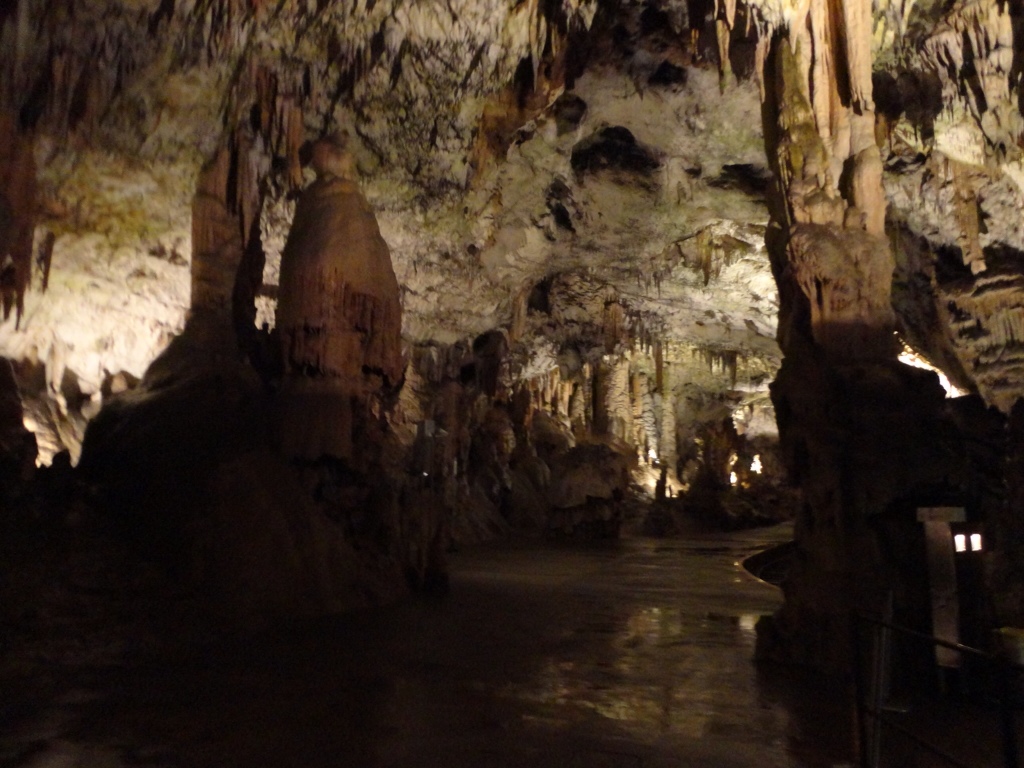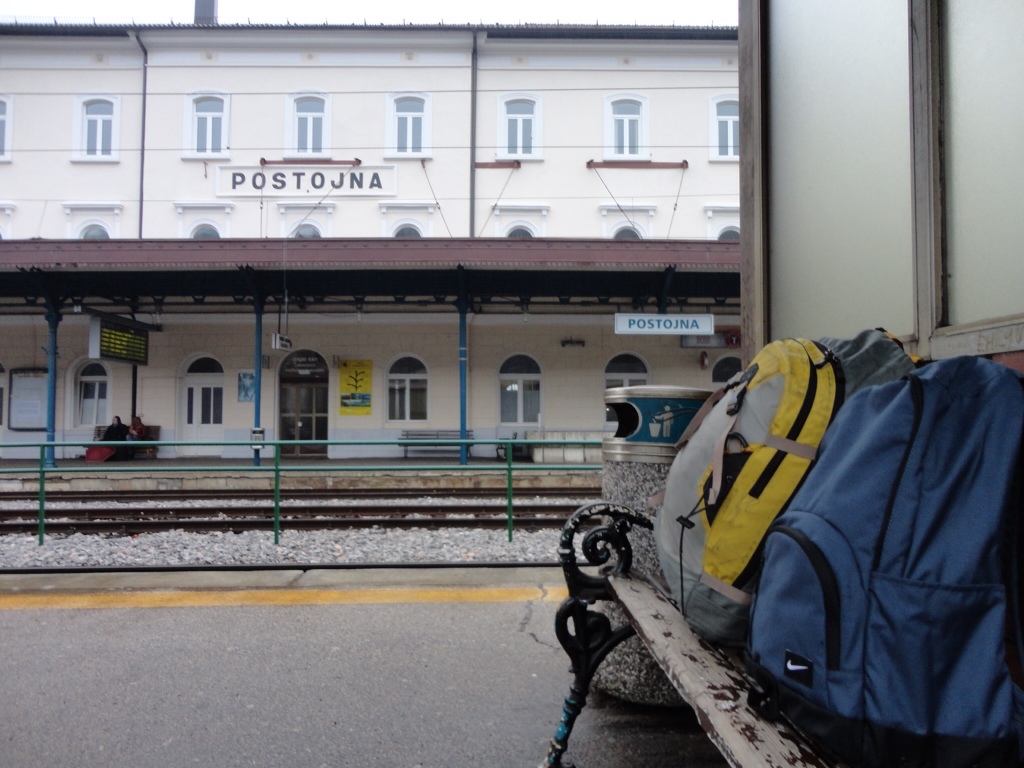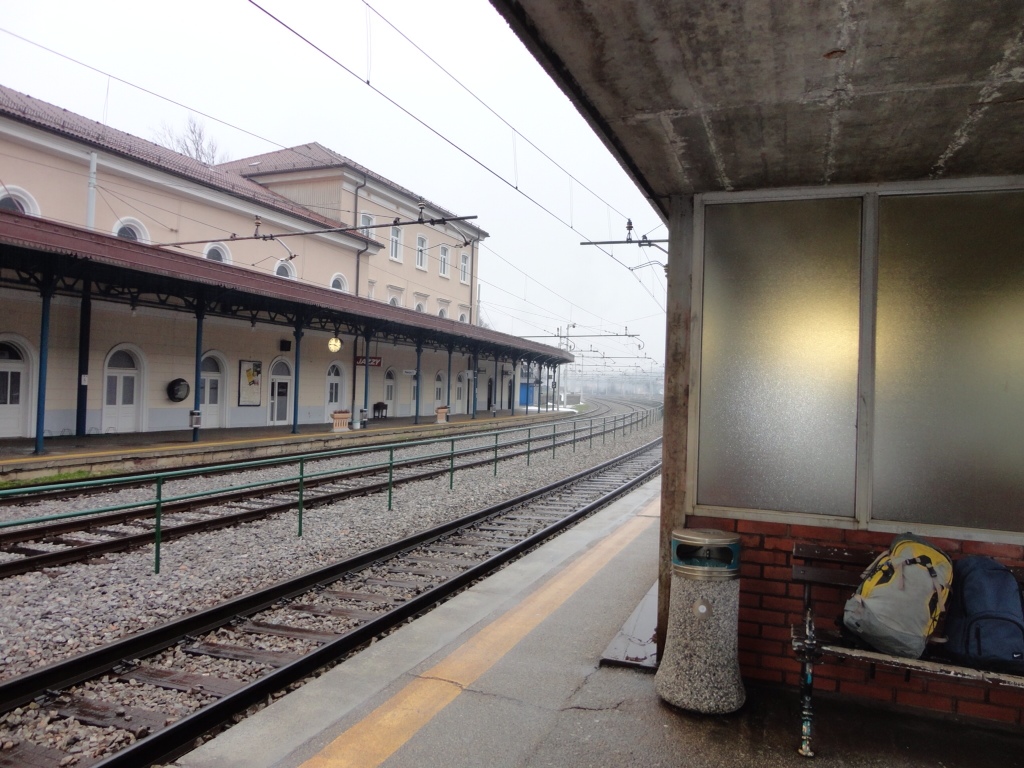Yes indeed. Once again I went to place I'd never heard of before. Talk about not planning your trip ahead.
Even so, it's the surprises en route that sometimes surprise the most. This cave, or perhaps these caves expresses the scene better, go for some 20 kilometers. And just to be clear, since we're talking caves here, that's underground.
I admit that these photos don't capture the depth and size of the place, but they do capture some of the natural beauty. More importantly, the caves are a study in patience. The patience and time that are among nature's great pallets. For example, those are stalactites shown above (inadvertent pun here, but I guess stalactites will always be show above, it's the stalagmites that should be shown below). And those stalactites are more than a meter long. They grow at a pace of one centimeter in one hundred years. That's patience.
And these are more than two meters.
This photo shows the size of the place, when we look at the size of these short-lived humanoids (by comparison to the stalag something's around them).
And so let's catch a few images that capture the beauty of what nature can do when given endless time away from the harassment of humanoids.
This cave dweller can grow up to two meters in length, cannot see, but has an intricate sensory system. Note the ears.
It lives on the other life forms that inhabit the darkness, such as snails, crabs and worms. There are stories that it has attacked humans who've got too close in the darkness of that cave. The three claws can be particularly dangerous.
By the way, I made up that “two meter” length bit. And also the attacks on humans. The Proteus, or Olm is only little. The ones I saw were shorter than your index finger (since I'm not good with centimeters and millimeters). I emphasized the possible size to give you that spooky rush that comes from the fear we all have of what lies out there in the darkness and in the unknown. Caves will do that to you.
So, back to our tour.
These stalacsomethings go from ceiling to floor, and that distance is more than 20 meters. At one centimeter per 100 years, well, you've got my point.
This is the cement walkway that takes you on a one hour walk through just a small part of the caves. You can see that for some lucky stalactites and stalagmites after many millennium they can embrace.
So, in the end, nature tells us that patience will be rewarded.
And I'd write more, but hey, I gotta go.
Once again, another train to catch.

